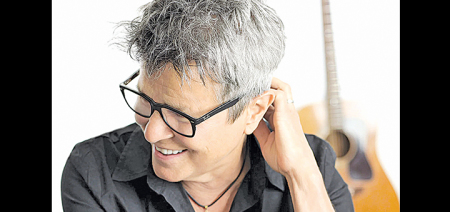Doing The Global Catholic Math In 2015
Published:
June 12th, 2015
‘On Religion’
By Terry Mattingly
When it comes to culture, the equation often works the other way around, with European trends "infecting" America. If that's the case, then American Catholic leaders must be doing the math after reading a sobering new study -- "Global Catholicism: Trends & Forecasts" -- by the Center for Applied Research in the Apostolate (CARA) at Georgetown University.
"These are the Vatican numbers and nothing in here will surprise the bishops," said Mark Gray, director of CARA Catholic Polls and coauthor of the report. "They are aware of their sacramental numbers and their Mass attendance numbers. ... They know that they face issues right now, and in the future, that are very serious."
When it comes to church statistics, experts study life's symbolic events: births, marriages and deaths. It also helps to note how often believers go to Mass and whether there are enough priests to perform all these rites.
If so, the European numbers in the CARA report are serious business. While Vatican statistics claim Europe's Catholic population rose 6 percent between 1980 and 2012, infant baptisms fell by 1.5 million and marriages between two Catholics collapsed from roughly 1.4 million to 585,000. The number of priests fell 23 percent and weekly Mass attendance kept declining, from 37 percent in the 1980s to 20 percent since 2010.
But the past lingers in brick and mortar. Even though European bishops closed 12 percent of their parishes during this study's timeframe, Europe -- with only 23 percent of the global Catholic population -- still has more parishes than the rest of the world combined.
Is the United States the next Europe? It's hard to compare numbers in the CARA study, since it placed North and South America in one region -- with trends in other nations obscuring those here.
However, other statistics gathered during this era reveal that infant baptisms in U.S. churches fell from 950,000 in 1980 to about 710,000 in 2014, and Catholic marriages fell from 350,000 to roughly 150,000. The number of priests fell from about 58,000 to 38,000, while the number of parishes stayed roughly the same. Weekly Mass attendance was 24 percent in 2012, down from 41 percent in 1980. American Catholic numbers would be down more, if not for immigration trends.
"The marriage numbers are absolutely crucial," said Gray. "Catholics are getting married -- just not in church and, perhaps, not to each other." Rising cohabitation rates must be a factor here, he added, making the "whole process of seeking a Catholic marriage more complicated for everyone."
The bottom line, stressed Gray, is that Catholicism is growing, in pews and at altars, in places -- such as Africa and Asia -- where Catholics are having more children.
Europe's current fertility rate is 1.7 -- well below the replacement rate -- with much of the growth among immigrants. Meanwhile, the Catholic population in Africa has risen 238 percent since 1980, in part because of a 5.1 fertility rate, in recent estimates, in sub-Saharan Africa. Weekly Mass attendance is 70 percent in Africa and the number of priests in Africa rose 131 percent in the years covered in this CARA report.
While the global distribution of priests and sanctuaries remains a complicated puzzle, it's impossible to ignore one overarching reality. In 1980, there were 3,759 Catholics per parish in the world, while the current statistic is 5,541 per parish.
The pressure on priests will keep rising in these mega-parishes, noted Gray, creating a greater "social distance" between overworked priests and the rising number of parishioners. This could lead to further declines in the number of Catholics going to Confession, members financially supporting their parishes and parents who -- with fewer children in their homes -- encourage them to become priests and nuns.
"Africa has priests, but needs more churches. America has lots of churches, but needs more priests," said Gray. "You can bring priests from Africa and Asia to America, but you probably can't keep doing that forever. And you can't pick up empty churches in Europe and move them to Africa. ... The pope can't point at the map and move churches and priests around to solve these kinds of problems. The church isn't a corporation."
Comments





